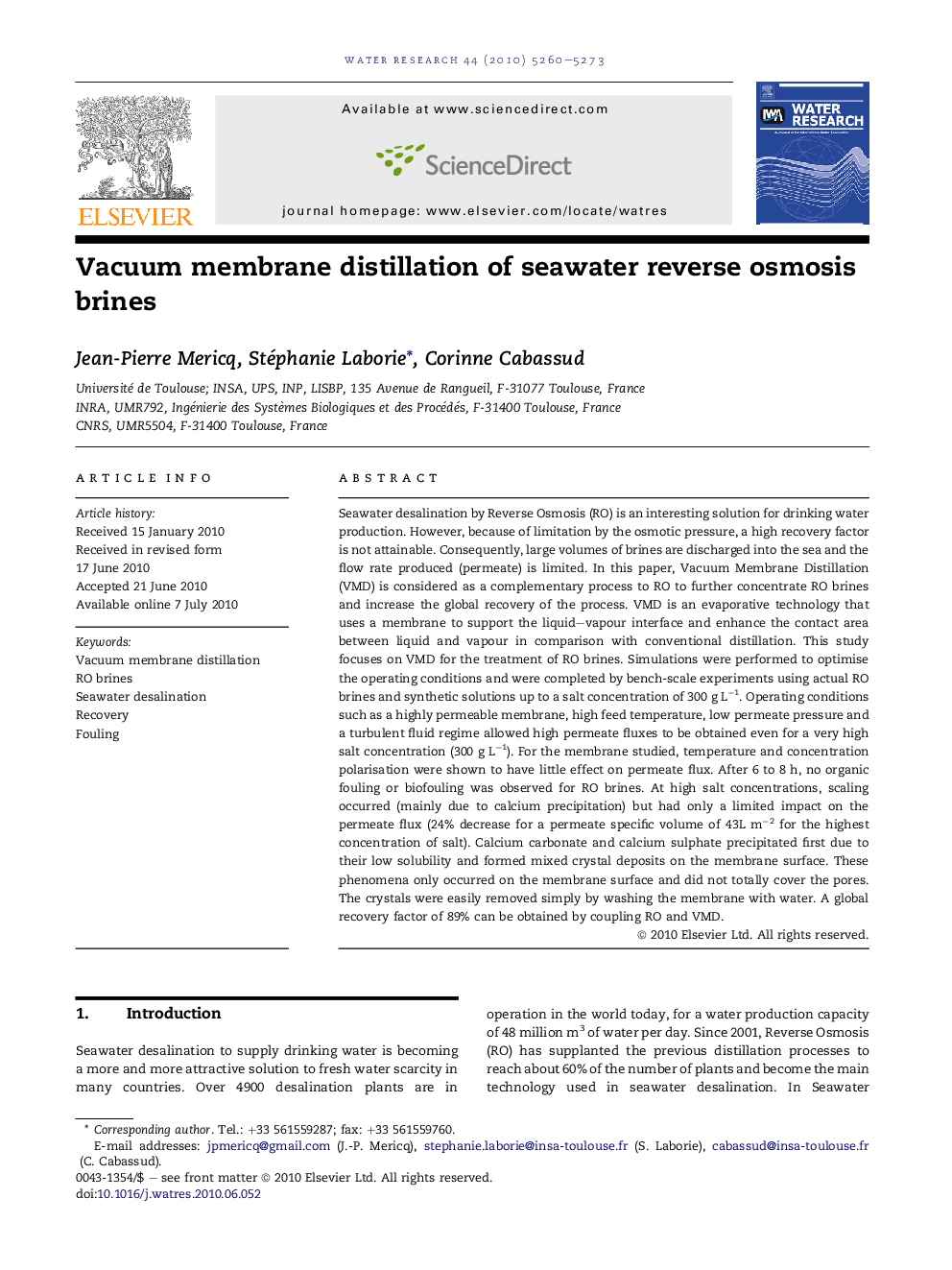| کد مقاله | کد نشریه | سال انتشار | مقاله انگلیسی | نسخه تمام متن |
|---|---|---|---|---|
| 4484715 | 1316930 | 2010 | 14 صفحه PDF | دانلود رایگان |

Seawater desalination by Reverse Osmosis (RO) is an interesting solution for drinking water production. However, because of limitation by the osmotic pressure, a high recovery factor is not attainable. Consequently, large volumes of brines are discharged into the sea and the flow rate produced (permeate) is limited. In this paper, Vacuum Membrane Distillation (VMD) is considered as a complementary process to RO to further concentrate RO brines and increase the global recovery of the process. VMD is an evaporative technology that uses a membrane to support the liquid–vapour interface and enhance the contact area between liquid and vapour in comparison with conventional distillation. This study focuses on VMD for the treatment of RO brines. Simulations were performed to optimise the operating conditions and were completed by bench-scale experiments using actual RO brines and synthetic solutions up to a salt concentration of 300 g L−1. Operating conditions such as a highly permeable membrane, high feed temperature, low permeate pressure and a turbulent fluid regime allowed high permeate fluxes to be obtained even for a very high salt concentration (300 g L−1). For the membrane studied, temperature and concentration polarisation were shown to have little effect on permeate flux. After 6 to 8 h, no organic fouling or biofouling was observed for RO brines. At high salt concentrations, scaling occurred (mainly due to calcium precipitation) but had only a limited impact on the permeate flux (24% decrease for a permeate specific volume of 43L m−2 for the highest concentration of salt). Calcium carbonate and calcium sulphate precipitated first due to their low solubility and formed mixed crystal deposits on the membrane surface. These phenomena only occurred on the membrane surface and did not totally cover the pores. The crystals were easily removed simply by washing the membrane with water. A global recovery factor of 89% can be obtained by coupling RO and VMD.
Journal: Water Research - Volume 44, Issue 18, October 2010, Pages 5260–5273